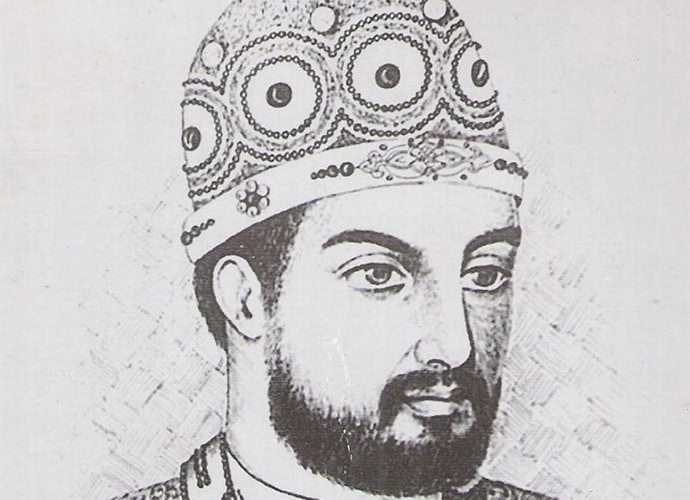BY Reshmi Dasgupta
Malik Muhammed Jayasi has become a household name now thanks to the outrage over Sanjay Leela Bhansali’s Bollywood depiction of Padmavati, his 16th century poetic opus on a 14th century event. Jayasi, whose patron was the then raja of Amethi (the current raja has joined the chorus against Padmavati!) must have depended on local lore for his tale of the lustful Alauddin Khilji attacking Chittorgarh to obtain Ratan Singh’s beauteous queen Padmini, who preferred jauhar to capture.
Yet historians are knocking heads over his poem. But two amazing stories, including one immortalised by Amir Khusro, also emerge from those times, with more evidence of their being real than Jayasi’s Padmavat.
One is about Deval Devi, the Vaghela princess whose father was defeated by Khilji and mother taken into his harem, but who ended up marrying the Sultan’s beloved eldest son Khizr Khan. The other is about Bibi Nanchari Amma, a Khilji princess who became a devotee of Venkateswara and journeyed south to be with her divine lord and died there.
There is no doubt that Khilji was blood-thirsty, as contemporary accounts list his massacres, many of them pointless except to cement his reputation as a fearful conqueror. But the story of Deval Devi and Khizr Khan is an aberration, which may be why Amir Khusro -who lived through the short and gory Khilji era and the start of the Tughlaq dynasty—decided to immortalise it in a masnavi often referred to as ‘Ishqiya’ in 1315.
Some say he composed it as a local alternative to popular Persian love stories of that time like Layla-Majnu. Whether Deval and Khizr actually fell in love or were pawns in royal realpolitik will never be known but their story certainly sheds a different light on Alauddin.
The story goes that when he defeated Rai Karna Dev II (who fled with his daughter Deval to Devagiri) Alauddin married the Vaghela queen Kaula Devi. She eventually won his trust and a decade later on her plea to bring her daughter Deval back, Alauddin despatched his general Malik Kafur, the infamous Gujarati Hindu convert to Deogiri (later Daulatabad), to do so.
That Alauddin supposedly listened to a captured queen is piquant enough; that he sent Malik Kafur (whom some historians aver had a “special” relationship with the Sultan) to fulfil her wish is even more unusual. But the most remarkable fact of all is that Alauddin allowed the Hindu princess Deval to marry his eldest son Khizr, after whom he renamed Chittorgarh fort (of Padmini fame) Khizrabad in 1303.
As no less a personage than Amir Khusro was inspired to write their ‘love story’, shouldn’t Bollywood be interested?
After Alauddin’s death, Malik Kafur was killed in a palace coup, Khizr and other Khilji princes were murdered by their brother Mubarak, who reigned briefly before being killed by usurper Khusro Khan, who in turn was vanquished by Ghiyasuddin Tughlaq. Tragically, the widowed Deval was apparently passed on to Mubarak and then Khusro.
Add to this the fact that there are acclaimed Gujarati novels on the last of the Vaghelas, including Karan Ghelo by Nandshankar Mehta, it should be prime material for a Bhansali movie. Of course another reason for Malik Kafur’s mission to retrieve Deval Devi in 1308 was the fact that Deogiri’s ruler had stopped paying the annual tribute he had committed to upon his defeat by Alauddin in 1296. His kingdom had been the staging point for Kafur’s attacks on the Pandyas of the south.
And that’s where the story of Bibi Nanchari Amma comes in: a Khilji princess (some aver she was Kafur’s daughter) who fell in love with a looted idol of Lord Venkateswara brought back to Delhi and given to her as a toy. It was during the reign of Mubarak Shah Khilji that Bibi Nanchari Amma expressed a wish to marry Lord Venkateshwara – like the legendary 8th century Vishnu devotee Andal and 16th century Meerabai.
The fratricidal Mubarak was actually a rather lax monarch by the standard of those times, so maybe that’s why he agreed to it, not because he saw Lord Venkateswara in a dream as some said later. Interestingly, he also apparently agreed to return other idols looted by Malik Kafur to the temples of the south.
So Ramanujacharya, head of the SriVaishnava Matha in Melkote in Karnataka (who also supposedly dreamt he must go to Delhi to retrieve the idol and bring the princess), headed north to do so. The journey took a toll on the princess, who died soon after her ‘marriage’ in 1316. But her samadhi is there at the Chellapillaraya temple in Melkote, where she is worshipped along with Lord Venkateshwara.
Interestingly, there is also a story that a Muslim princess travelled to the magnificent Ranganathaswamy temple at Srirangam. Kafur’s army did loot the temple so Bibi Nanchari may well have been that royal bhakt especially as a tradition at Srirangam points to a Muslim connection. Inside the complex there is a temple to ‘Thulukka Nachiyar’, a consort of the Lord.
He is draped in a lungi when he visits her and the prasadam there is of wheat parathas, an ode to her northern link. There is also an idol of her in Tirumalai and a temple in Kadapa where thousands of Muslims come to worship, as do many devotees of Venkateswara before they go to Tirupati.
Surely the incredible tales of these two women deserve to be told as much as their contemporary, Padmini?
Courtesy: The Economic Times

